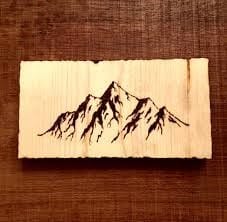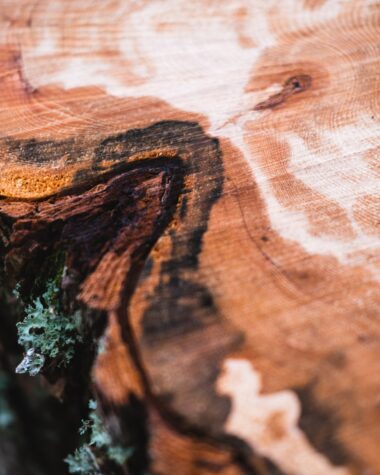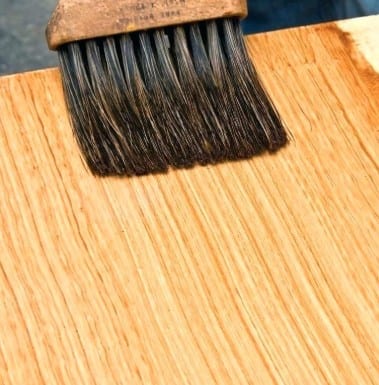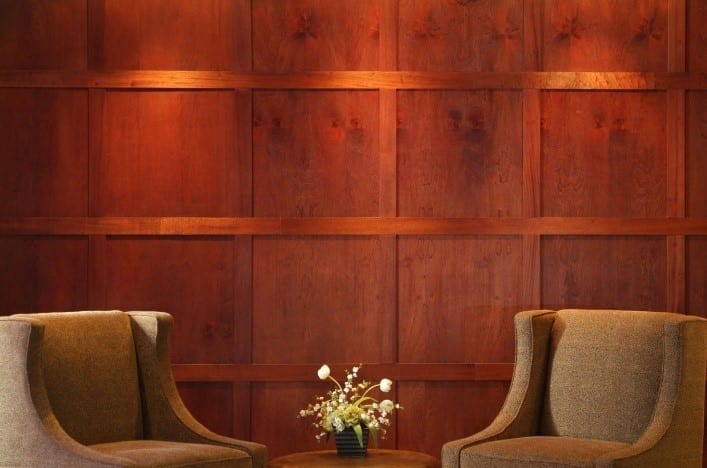Rich, dark and luxurious wooden furniture, antique pieces and high-end furniture pieces; these were possibly stained using time-tested techniques. Wood stain does not just change the color of wood, but it also helps protect the surface from marks, scratches and water damage.
Wood stain also highlights the lovely natural grain of the wood. Without wood stain, furniture pieces will look dull and lifeless.
But do you know that y you can darken wood without using commercially-prepared stains?
Staining wood the natural way
Commercially-prepared stains are costly and some may even contain harmful ingredients that will only harm your lovely wooden furniture pieces.
This guide will show you how to make wood stain made from all-natural household materials. Not only are these very effective in staining wood but are easy to use and are very affordable.
These don’t contain solvents and VOCs so these are perfectly safe for wood, people, kids, and pets.
The science behind natural wood stain techniques
Why does wood change color when exposed to stains? This is the science behind staining. Iron pieces dissolve in the vinegar (acetic acid) and create a soluble substance (iron acetate). When this is applied to wood, the iron acetate reacts with the natural tannins found in wood and this creates various shades of dark colors like brown, grey and black. It is more than just a physical change in wood. Staining is a chemical reaction which is not just durable indoors but also outdoors.
Therefore other materials can be used to stain wood. You may have heard coffee stain, tea stain or even beet juice stain which are terms used in natural staining.
However, the problem with these natural stains is that these immediately fade in time as the wood is exposed to sunlight. This guide uses basic techniques using the reaction of the acid with metal.
You may use any of the following combinations
- 1/2 cup of white vinegar and a steel wool pad
- 1 1/2 cup of balsamic vinegar and a steel wool pad
- 1 1/2 cup of apple cider vinegar and a steel wool pad
- 1 1/2 cup of white vinegar and rusty nails
Additional things that you will need
- Glass jar with lid
- Paintbrush
- Clean Rag
Procedure
Step #1
Start making the stain. Place a super fine steel wool pad or rusty nails in a clean and dry jar.
Pour enough vinegar or apple cider to cover the steel wool pad or the rusty nails.
Loosely put the lid on the jar to allow for air exchange when the chemical reaction is happening.
Take note that if the pad is not totally submerged, rust will quickly form on the portion exposed to air which is ok.

Source: https://www.apieceofrainbow.com/make-wood-stain/
Step #2
Wait until twenty-four hours. Remove the solution by pouring this into another jar, or take the steel wool out of the jars to stop the reaction.
You will notice that the steel wool pads have shrunk to about 1/2 the size. If you leave the pads soaked in vinegar for a longer time, you get a darker stain.
If you only soak this in half a day or less than 24 hours then you will produce a lighter stain.
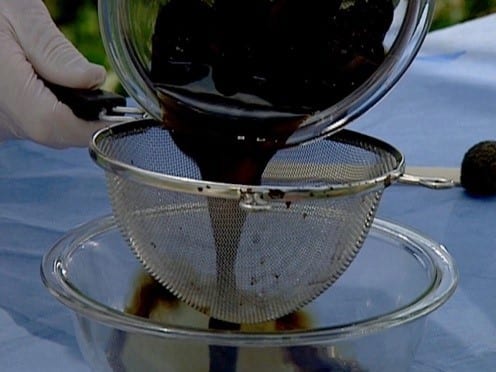
Source: https://www.diynetwork.com/how-to/skills-and-know-how/painting/how-to-make-homemade-stains
Step #3
Brush the mixture on a piece of wood to test it. Let it completely dry for a day to see the effect. If you find that the stain is lighter, apply another one.
You can control how light or how dark the effect would be for as long as you wait for the stain to dry up before applying another coat.
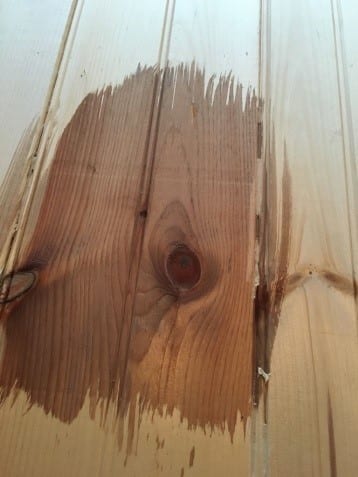
Source: https://www.instructables.com/id/tea-staining/
Step #4
After testing the stain, you can now apply this to the wooden furniture you want to stain.
Apply stain when the weather is sunny so you can take out your furniture to dry completely.
Use a clean brush or a soft, dry and clean rag to apply the wood stain.
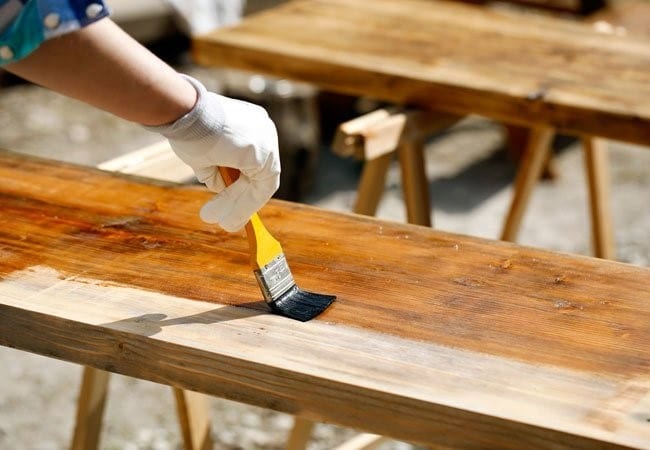
Source: https://www.bobvila.com/articles/how-to-weather-wood/
What’s the difference between the different ingredients (vinegar and apple cider)?
Actually, the stain color has nothing to do with the vinegar color.
Despite being dark in color, balsamic vinegar plus the steel wool will produce a lighter stain.
White vinegar plus steel wool seems to provide a darker stain over all other combinations.
Conclusion
You can darken wood without using commercial stains. You can use natural products like vinegar or apple cider with steel wool pads or rusty nails. A combination of any of these can create a strong, effective yet non-toxic stain that’s good for the environment.

